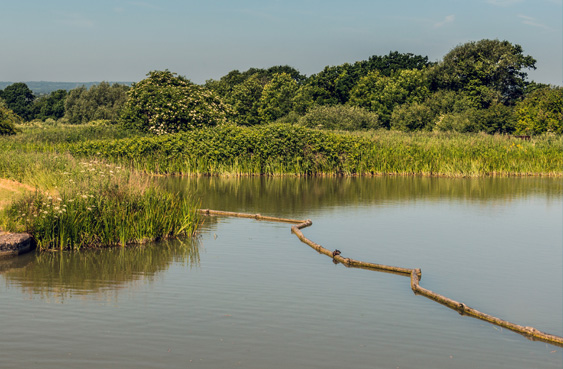- Home
- Our purpose
- Rivers and coastal waters
- Wild swimming
What you need to know
It’s important for wild swimming enthusiasts to know that there are a number of factors that affect river water quality.
Water companies can have an influence, along with other activities such as agricultural practices, septic tanks and road drainage, too.
Find out more about the water quality status of popular wild swimming spots in our region, such as Warleigh Weir, Farleigh Hungerford, French Weir, and Fordingbridge.
Factors that affect water quality
Learn more about the different factors that can affect the water quality of wild swimming spots.
Wastewater treatment
Most of the sewage we treat is organic which is why we use natural, organic processes to treat it, which involves bacteria breaking down waste.
After we treat wastewater, it is released back into the sea and streams, which will include some bacteria.
Our water recycling centres are almost 100% compliant with environmental standards, which means there is no adverse effect on wildlife.
The purpose of treatment processes is to achieve standards that protect the environment rather than public health.
Learn more about the water recycling process.
Why can’t we change the way we treat wastewater?
At some popular coastal sites, additional disinfection treatment (using ultraviolet light) has been installed at our water recycling centres to meet increased public health standards.
This comes at a significant cost to the environment in terms of tonnes of CO2 emitted from the increased energy use of this disinfection process. We currently use an estimated 3,843,000 kWh to power this UV equipment. Most of the sites are required to dose 24/7 throughout the year even when no one is benefitting from it.
Taking a similar approach at inland treatment sites – to kill bacteria to meet bathing water standards – would cost many hundreds of millions of pounds to build suitable treatment processes and millions of pounds to operate each year.
In addition, the environmental impact would be thousands of tonnes of additional CO2e (carbon dioxide equivalent) emitted each year.
This is diametrically opposite to the direction of travel that we as a business and as a country are trying to achieve to combat our climate crisis. As a business we have committed to achieving a net-zero carbon footprint by 2030 – some 20 years ahead of the whole country.
Disinfecting at these sites to reduce the public health risk for swimmers would need support from customers, the Environment Agency and Ofwat. It is not just a water company decision, but we’re happy to engage with those who are thinking about bathing water designation for inland rivers.
Storm overflows
Heavy or prolonged rainfall can rapidly increase the flow in a combined sewer until the amount of water exceeds sewer capacity.
Storm overflows act as relief valves, allowing excess stormwater to be released to rivers or the sea.
This protects properties from flooding and prevents sewage from backing up into streets and homes during heavy storm events.
As storm overflows should only operate during periods of intense rainfall, any foul water released from them will be very dilute because of the large volumes of rainwater within the system.
Why can’t we get rid of all storm overflows?
In an ideal world we wouldn’t have a combined sewerage system, but many sewers were laid hundreds of years ago with areas, including town centres, built on top of the network of pipes. To upgrade the system is simply not feasible without demolishing buildings, causing serious disruption, and investing substantial sums of money.
There is the risk that with a growing population and climate change affecting weather patterns, the use of storm overflows could increase. That’s why we are calling on the government to rule that all new developments cannot connect their surface water drainage to sewers that have sewage in them.
Other factors
There are a number of sources of bacteria entering rivers from diffuse pollution sources including:
- agricultural and urban run-off
- manure and slurry applications to land
- faeces from farm animals, rodents, wildlife and pets
- discharges from private septic tanks
- runoff from highways and surface water drains
- misconnections (foul drainage from properties incorrectly connected into the surface water system by the homeowner).
All of these sources would need to be addressed before a river could meet a standard that’s deemed ‘safe’ for swimming.
Sewer blockages can also affect river water quality as sewage can back up in the system and run off into watercourses. You can protect local watercourses by learning how to avoid blockages.
We are working with farmers to help manage agricultural run-off to improve river water quality.
Advice for swimmers and dog walkers
The Royal Life Saving Society UK and Public Health England provide advice on staying safe when swimming in open water.
Allowing dogs to swim in rivers can sometimes result in them picking up an illness. The Kennel Club and People's Dispensary for Sick Animals' advice will help you keep your dog safe when near water.

